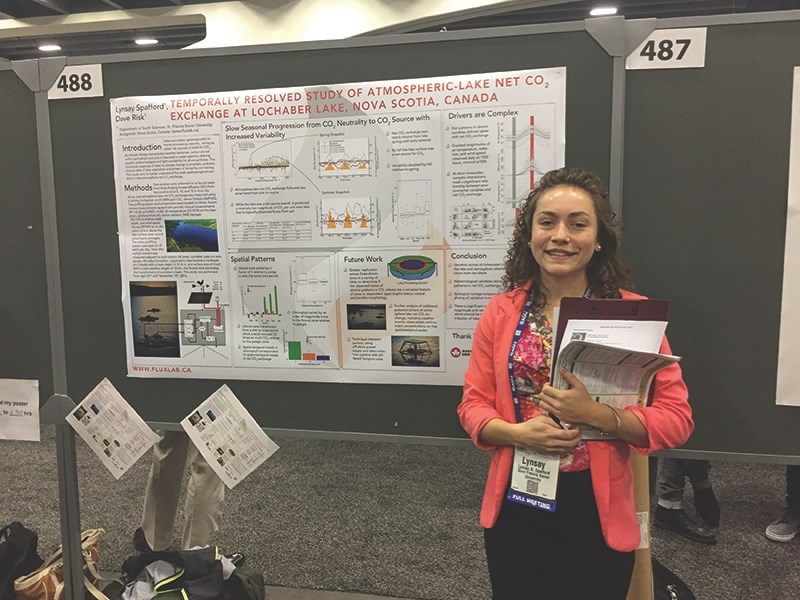Growing up in rural Alberta, Lynsay Spafford never thought she’d ever be attending a major international environmental and earth science conference during her undergraduate in California, let alone being recognized as one of the top student presenters.
The Edwin Parr graduate did just that in December, winning the Outstanding Student Paper award at the American Geophysical Union (AGU), which is the largest earth and space science meeting in the world which attracts more than 20,000 mainly PhD and master’s students.
Dr. Dave Risk, St. Francis Xavier university professor and Spafford’s supervisor, said this kind of prestige is rare among undergraduates.
“Just to give a picture of how unusual it is to have someone win this award – in the past 17 years at our university, of all the students that have gone, she’s the first one to have won,” he said.
Spafford is in her fourth year of her honours environmental sciences degree with a concentration in biology, and presented about the research she’s been doing on gas exchange between lakes and the atmosphere at the AGU.
She said when she learned she’d been award the Outstanding Student Paper award, she was in a state of disbelief.
“I expected as an undergrad researcher that I would be very much an amateur amongst everyone at the conference,” she said. “Then I just felt so flattered that I got this opportunity to go to California and to even present, let alone win this award.”
It was a story of determination, when after trying to measure gases off lakes a couple of years ago without success, Risk said Spafford asked to try it out again because she said she thought she’d found the solution.
“She’d developed this really long time series of measurements on a lake, and her system is like a robot basically, so she built this robot that would measure hourly for her,” he said.
Measurements such as hers had been taken before, but had to be done by hand and would tend to be infrequent.
Risk said Spafford’s is “really one of the first data sets of its kind.”
He also said this will be a new tool for environmental monitoring, the implications being a more precise measurement of green house gas.
“We can use these systems to measure in those kind of environments where we’re hoping emission will be lower, or we can maybe manage them to be low if we knew what the emissions were,” he said.
Risk said they’ve already received some requests about seeing Spafford’s same technology going to Siberia to monitor the permafrost environment.
Spafford said she’s going to continue with her research, and this accomplishment may give her an edge going forward into her master’s and beyond.
“It gives me a huge advantage going forward, because to be successful in research careers you need to be qualified to get research grants and scholarships,” she said.



